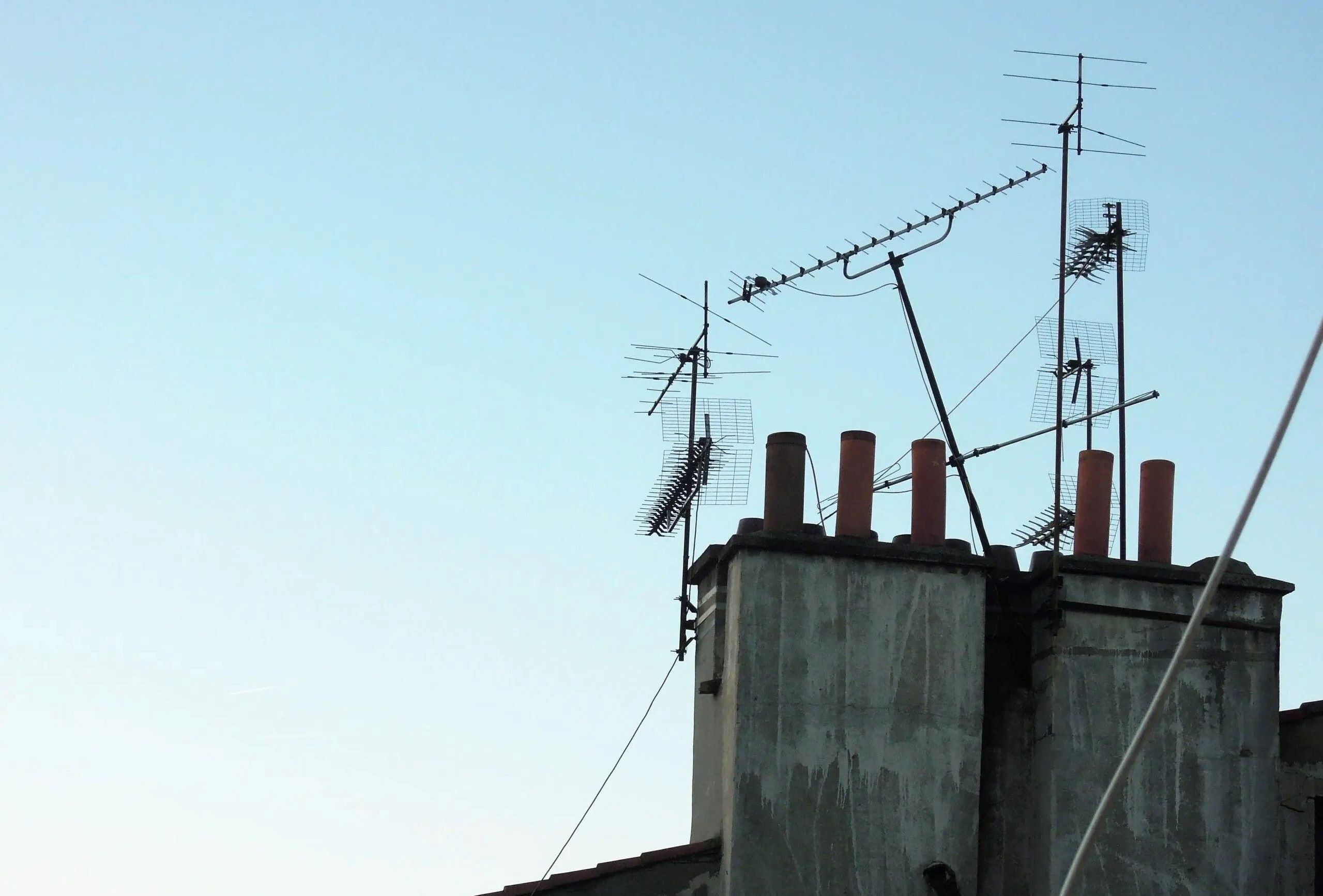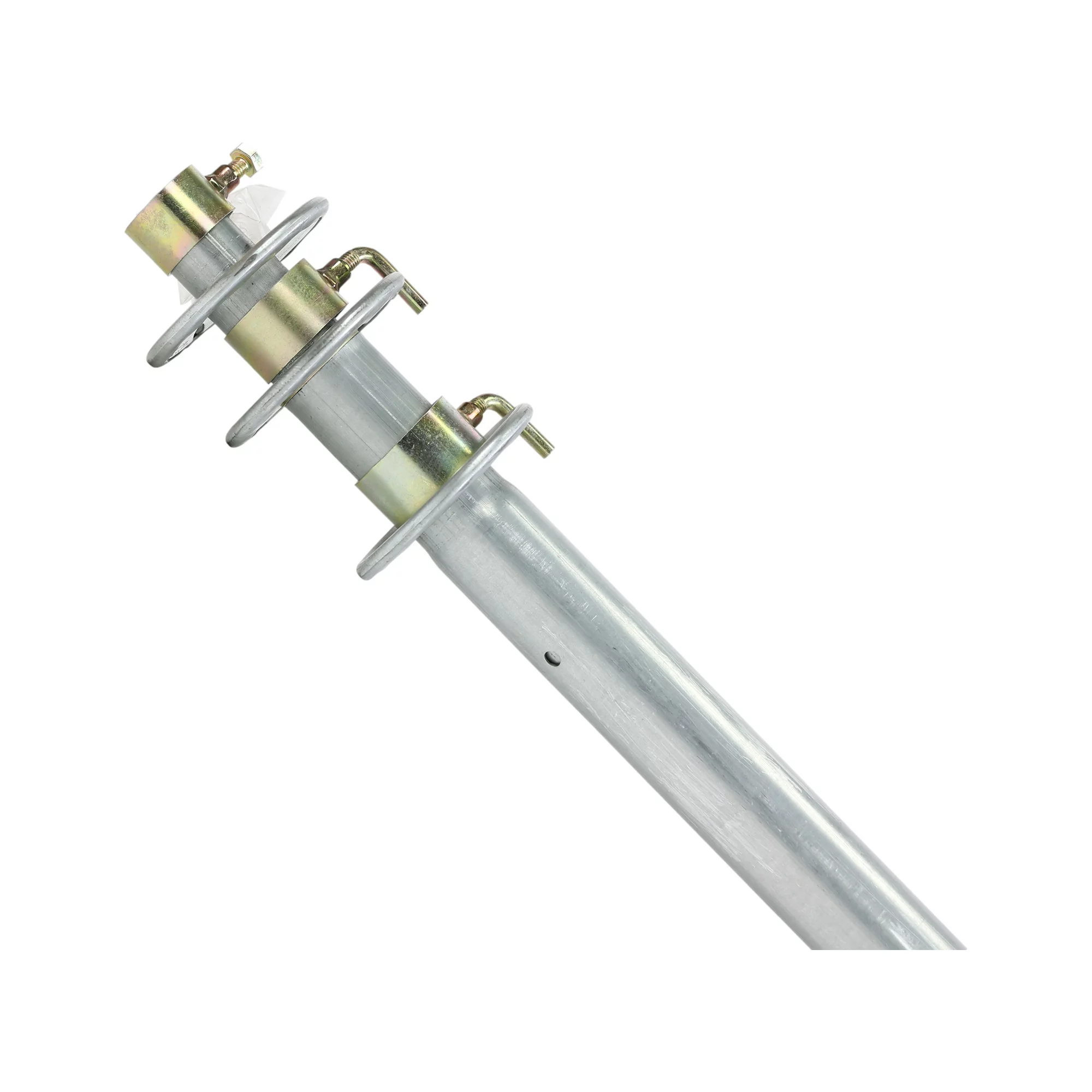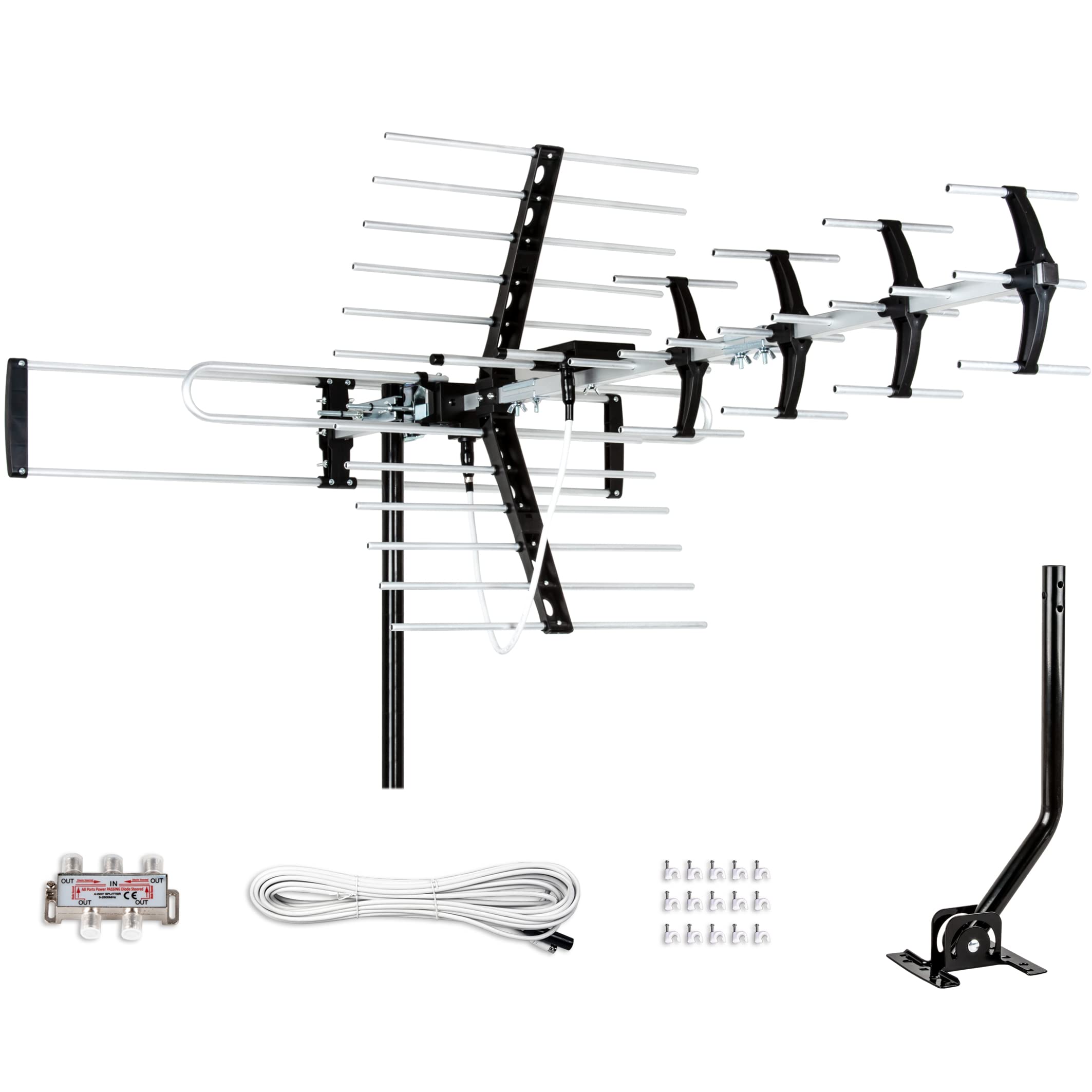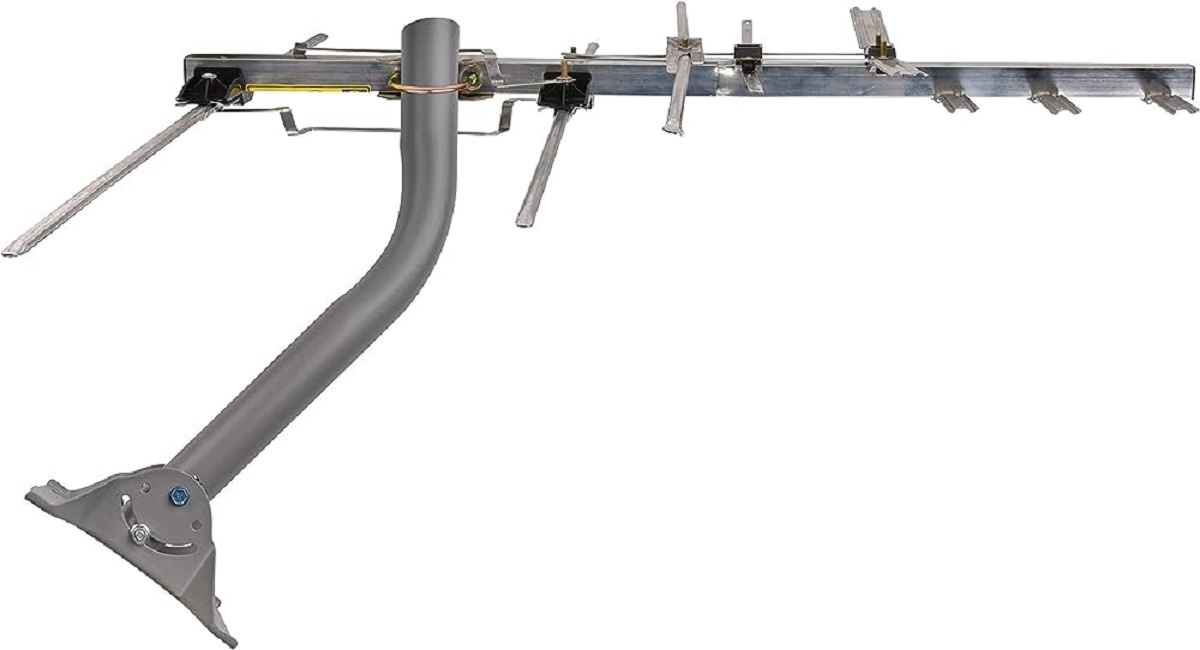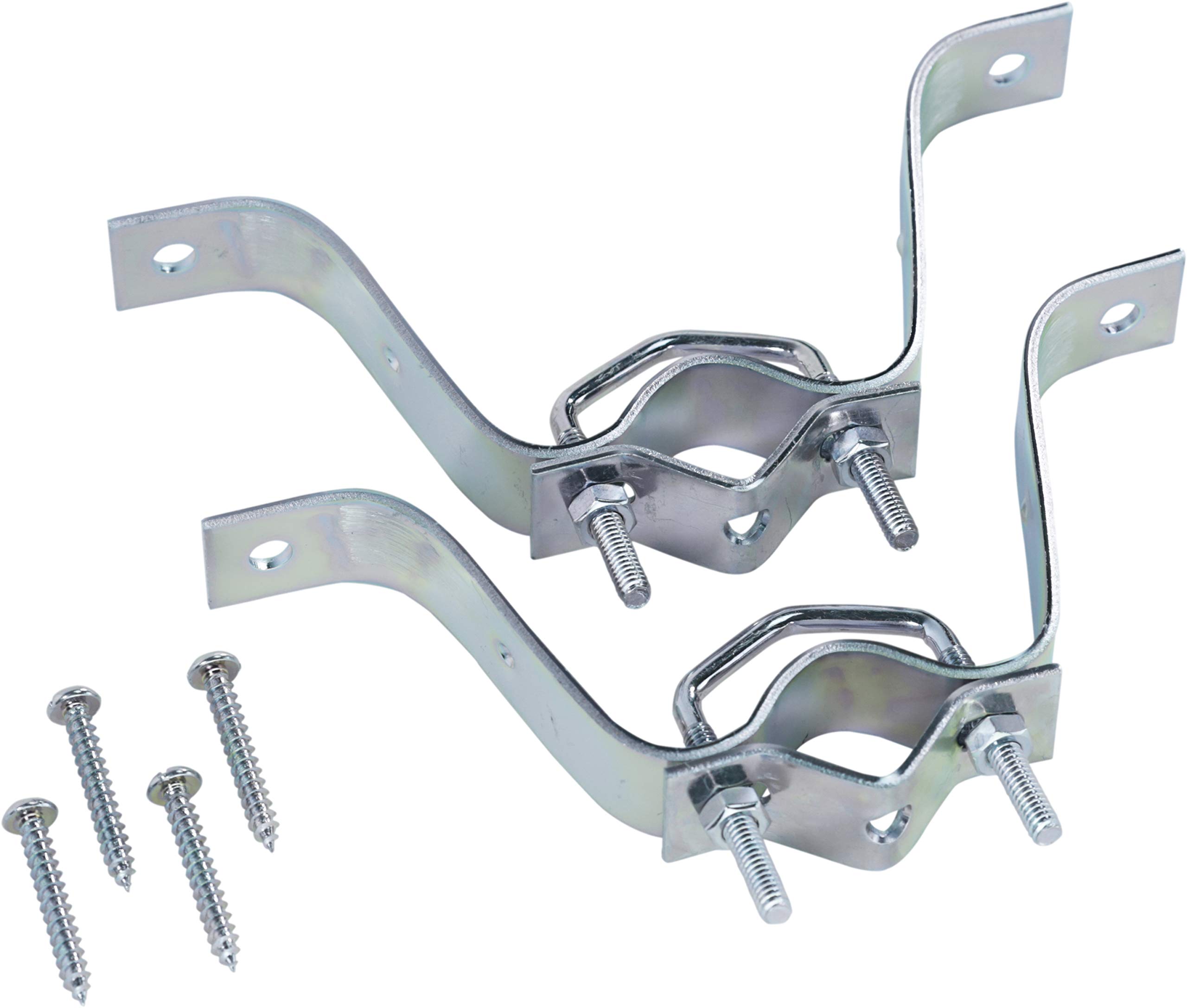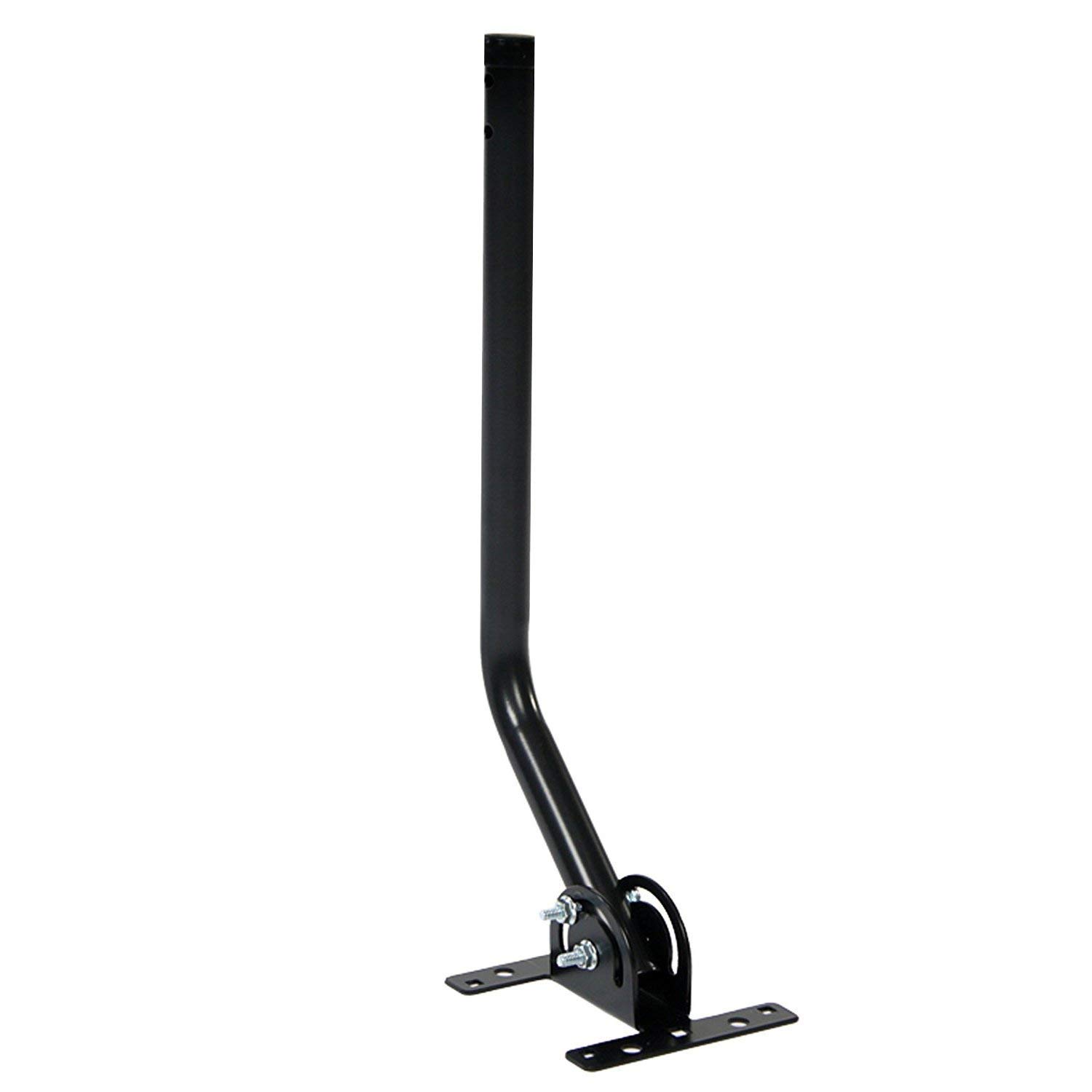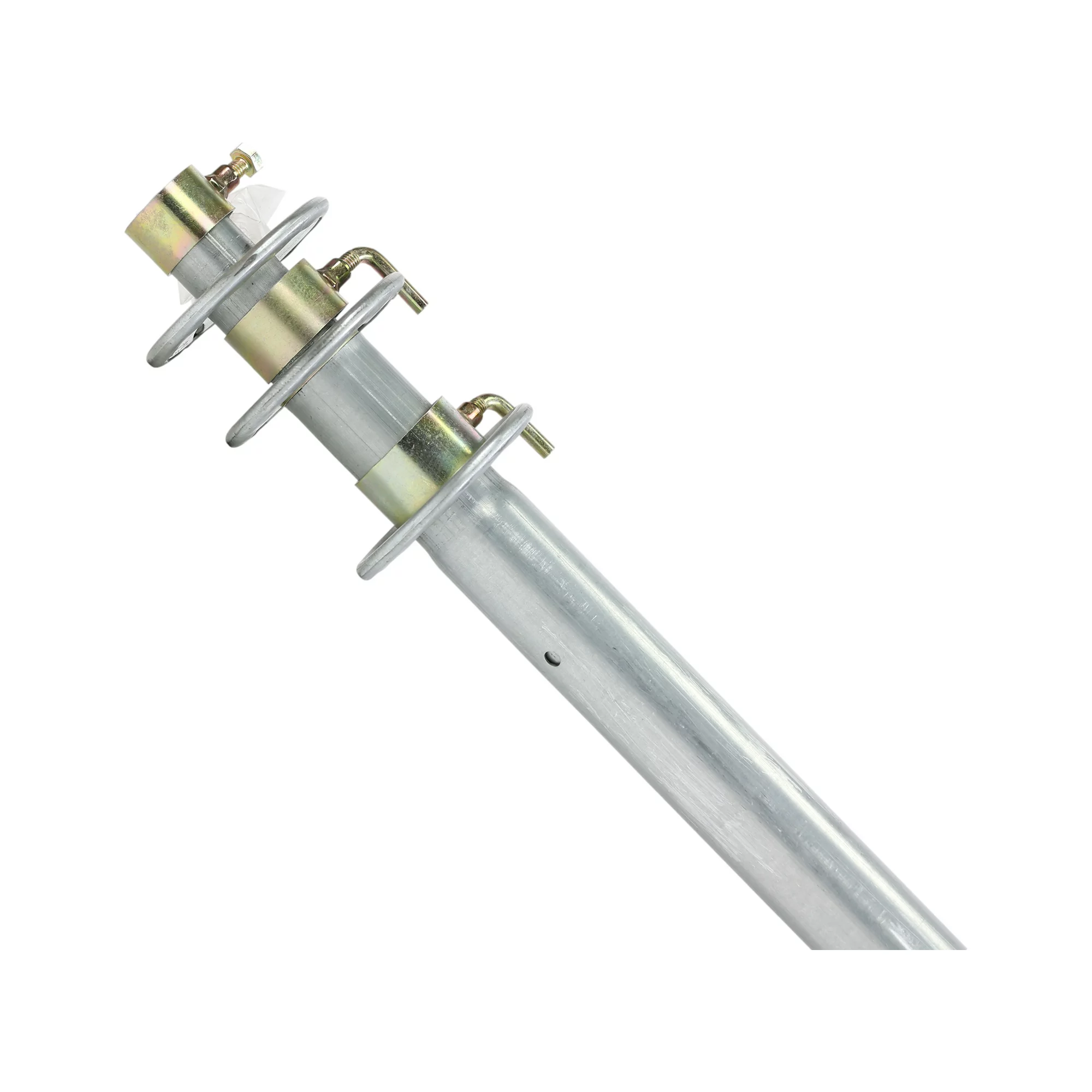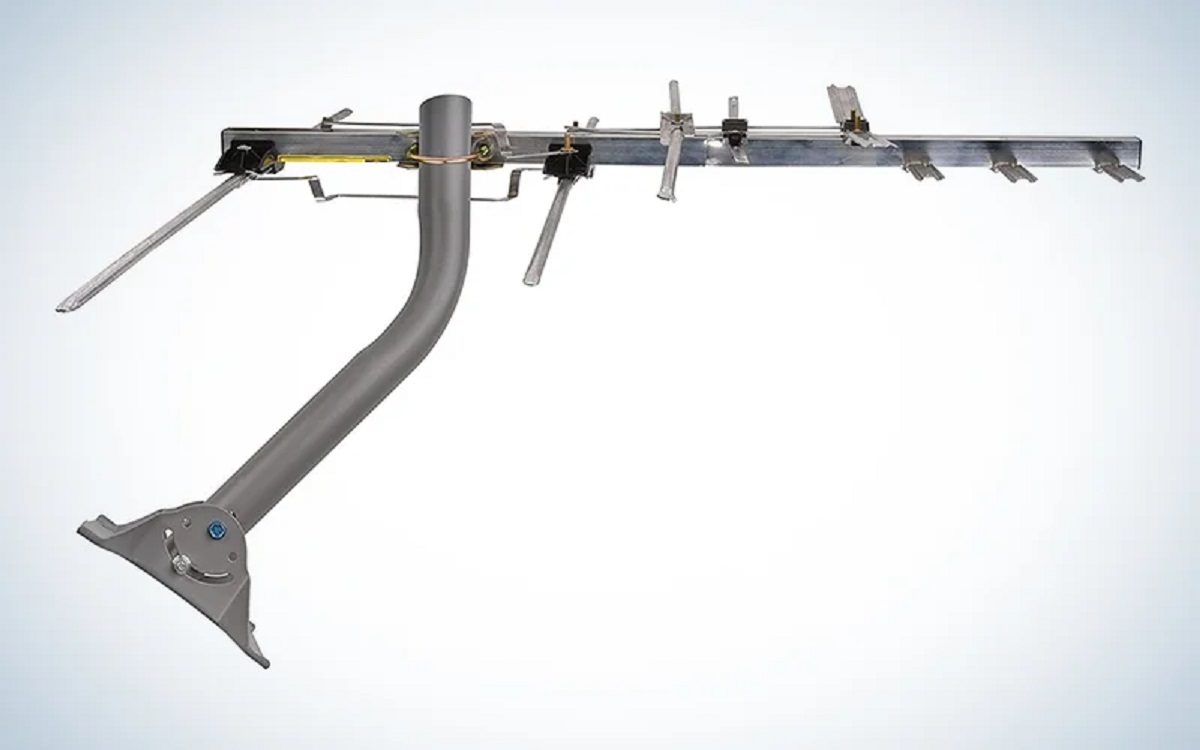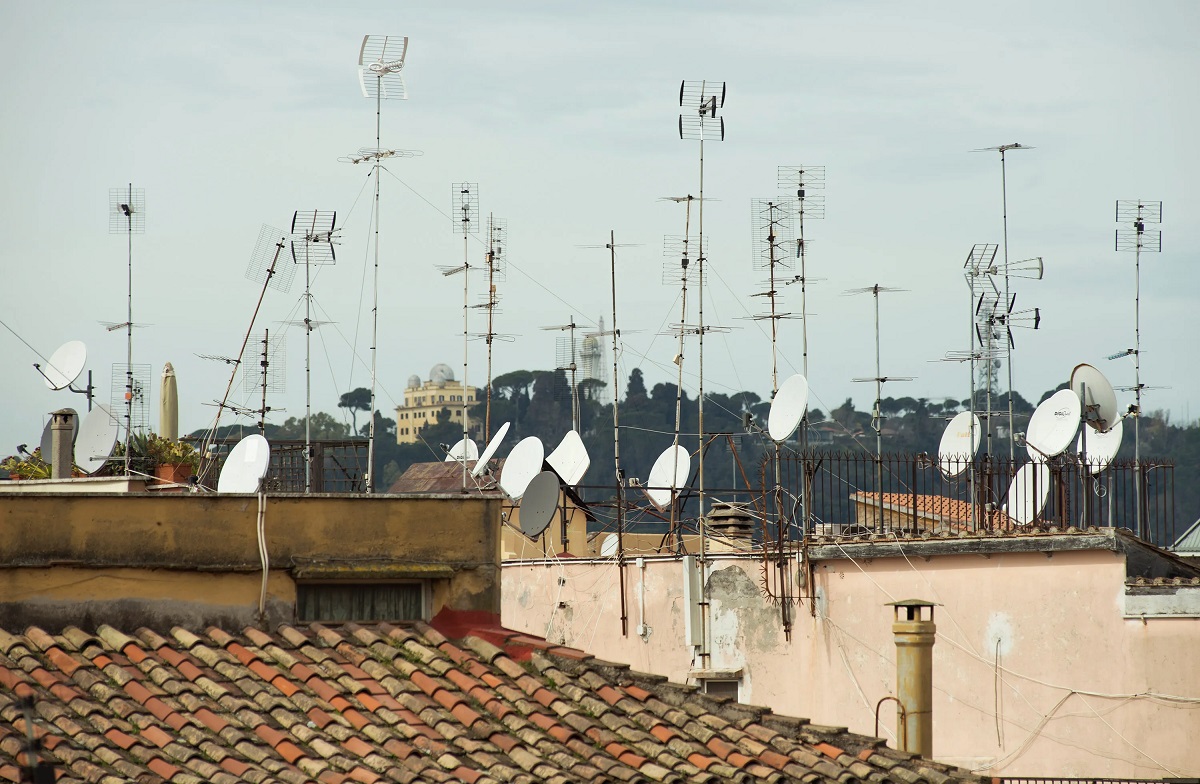Introduction
Welcome to our guide on how to mount a TV antenna at the optimal height. Whether you’re looking to cut the cord and enjoy free over-the-air television or simply trying to enhance your current reception, mounting your TV antenna at the right height plays a crucial role in maximizing signal strength and ensuring a clear and reliable reception.
When it comes to TV antenna installation, it’s important to consider several factors, such as line of sight, signal strength, and interference. Additionally, the type of antenna you choose and whether it will be installed indoors or outdoors can also impact the optimal mounting height.
In this guide, we’ll explore the different factors to consider when determining the height at which to mount your TV antenna. We’ll also discuss the types of antennas available, guidelines for both indoor and outdoor antenna mounting heights, and provide tips for a successful installation.
So, whether you’re a DIY enthusiast or prefer to hire a professional, this guide will help you make an informed decision regarding the height at which to mount your TV antenna, ensuring you receive the best reception possible.
Before we dive into the specifics, let’s take a closer look at the factors that come into play when determining the optimal mounting height for your TV antenna.
Factors to Consider
When deciding on the height at which to mount your TV antenna, there are several important factors to take into consideration. These factors can greatly impact the quality and strength of your signal, ultimately affecting the clarity of your television reception. Let’s explore these factors in more detail:
1. Line of Sight: Line of sight refers to the direct, unobstructed path between your TV antenna and the broadcasting tower. Ideally, you want to mount your antenna as high as possible to achieve clear line of sight. Any obstacles, such as buildings, trees, or hills, can obstruct the signal and reduce reception quality. Consider the surrounding environment and try to find a location with minimal obstructions.
2. Signal Strength: The signal strength in your area is another crucial factor to consider. This can be determined by using online resources or specialized apps that provide signal strength maps. If you live in an area with a weak signal, you may need to mount your antenna at a higher elevation to compensate and receive a clear signal.
3. Interference: Interference from nearby electronic devices, power lines, or other wireless signals can disrupt your TV signal. If you’re experiencing issues with signal interference, try moving your antenna to a different location or consider using an antenna with built-in signal filtering capabilities to minimize interference.
4. Types of TV Antennas: Different types of TV antennas have varying optimal mounting heights. Indoor antennas are typically mounted close to or directly on the TV, while outdoor antennas require elevation to overcome obstacles and achieve better reception. Consider the type of antenna you’re using and follow the manufacturer’s guidelines for the recommended mounting height.
By carefully considering these factors, you’ll be able to determine the optimal height at which to mount your TV antenna. In the following sections, we’ll provide specific guidelines for both indoor and outdoor antenna mounting heights to help you achieve the best reception possible.
Line of Sight
When it comes to mounting a TV antenna, having a clear line of sight between the antenna and the broadcasting tower is crucial for optimal reception. Line of sight refers to an unobstructed direct path between the antenna and the tower, allowing for the best possible signal strength and clarity.
Here are some important points to consider regarding line of sight:
- Elevation: Mounting your antenna at a higher elevation can help overcome obstacles such as buildings, trees, or other structures that may interfere with the signal. The higher you can position the antenna, the better chance you have of achieving an unobstructed line of sight.
- Obstacles: Take note of any potential obstacles in the surrounding area that could hinder your antenna’s line of sight to the broadcasting tower. Trees, tall buildings, and hills can all impact the signal quality. Try to choose a location for your antenna that minimizes these obstructions.
- Distance: The distance between your antenna and the broadcasting tower can also affect line of sight. In general, the closer you are to the tower, the less likely you are to encounter signal issues due to obstacles.
- Antenna Direction: If you know the direction of the broadcasting tower, point your antenna directly towards it to ensure the best line of sight. This can be determined by using online resources or TV signal strength apps that provide tower location information.
It’s important to note that even with a clear line of sight, other factors like signal strength and interference can still affect reception quality. However, achieving an unobstructed line of sight is an essential first step towards improving antenna performance.
By considering the elevation, identifying potential obstacles, checking the distance to the broadcasting tower, and properly orienting your antenna, you can maximize your chances of achieving a clear line of sight and improve the overall reception of your TV antenna.
Signal Strength
Understanding the signal strength in your area is crucial when it comes to mounting your TV antenna. The signal strength determines the quality and reliability of the reception you will receive. To optimize your antenna’s performance, you need to consider the following factors related to signal strength:
- Signal Map: Utilize online resources or specialized apps that provide signal strength maps for your location. These tools can give you an idea of the strength of the signals in your area and the available channels.
- Amplification: In areas with weak signals, you may need to use a signal amplifier or booster to enhance the reception capabilities of your antenna. These devices amplify the TV signals, allowing for better reception, especially if you are located far from the broadcasting towers.
- Antenna Gain: Consider the gain rating of your TV antenna. Antenna gain refers to its ability to focus and capture the TV signals. Higher gain antennas can improve reception in areas with weaker signals or when there are obstacles affecting the line of sight. However, be cautious with excessive gain, as it can also amplify unwanted interference.
- Positioning: Experiment with the positioning of your TV antenna to find the optimal spot that maximizes signal strength. Small adjustments, such as rotating the antenna or changing its height, can significantly affect signal reception.
It’s worth noting that signal strength can vary, even within the same area. Factors such as geographical features, weather conditions, and nearby sources of interference can impact signal quality. Therefore, it’s important to regularly check signal strength and make adjustments as needed to ensure optimal reception.
By understanding the signal strength in your area, using signal amplification techniques if necessary, considering the gain of your antenna, and experimenting with positioning, you can significantly enhance the overall signal reception and enjoy a clearer, more consistent television viewing experience.
Interference
Interference can disrupt the TV signal and impact the quality of reception. It’s important to identify and address sources of interference to ensure optimal antenna performance. Here are some factors to consider when dealing with interference:
- Nearby Electronic Devices: Electronics such as computers, routers, smartphones, and even fluorescent lights can emit signals that interfere with TV reception. Keep your TV antenna away from these devices to minimize interference.
- Power Lines: High-voltage power lines can introduce electrical interference that affects TV signal quality. If possible, avoid mounting your antenna near power lines to reduce the risk of interference. Alternatively, consider using a TV antenna with built-in filtering capabilities to minimize the impact of power line interference.
- Other Wireless Signals: Other wireless devices operating on similar frequency bands, such as Wi-Fi routers or cordless phones, can interfere with your TV reception. Try to keep your TV antenna away from these devices or consider using shielding materials or filters to reduce interference.
- Weather Conditions: Certain weather conditions, such as heavy rain or storms, can temporarily disrupt TV reception. While you cannot control the weather, being aware of potential disruptions can help you understand the cause of any signal issues during inclement weather.
If you’re experiencing interference, the first step is to identify the source. You can do this by systematically turning off or moving electronic devices or temporarily disabling wireless connections to see if it improves signal quality. If the interference persists, try repositioning your antenna or using shielding materials to minimize the impact.
Additionally, using a TV antenna with built-in signal filtering capabilities can help reduce the effects of interference. These antennas are designed to filter out unwanted signals and focus on capturing the desired TV signals, resulting in clearer reception.
By identifying and addressing sources of interference, you can minimize signal disruptions and enjoy a more consistent and reliable TV reception experience.
Types of TV Antennas
When it comes to TV antennas, there are two main types to consider: indoor antennas and outdoor antennas. Each type has its own benefits and considerations. Understanding the differences between these two options can help you make an informed decision about the type of antenna that best suits your needs.
1. Indoor Antennas: As the name suggests, indoor antennas are designed to be used inside the home. They are typically compact, lightweight, and easy to install. Indoor antennas are a great option if you live in an area with strong TV signals or if you are located close to broadcasting towers. They are also a suitable choice if you have space constraints or if you are unable to mount an antenna outdoors. Keep in mind that indoor antennas are generally less powerful than outdoor antennas and may be more susceptible to interference from obstacles within your home, such as walls or appliances.
2. Outdoor Antennas: Outdoor antennas are designed to be mounted outside and offer greater signal reception capabilities compared to indoor antennas. They are larger in size and are built to withstand various weather conditions. Outdoor antennas are ideal if you live in an area with weak TV signals or if you are situated far from broadcasting towers. They provide better line of sight to the towers and are less likely to be obstructed by nearby buildings or trees. Outdoor antennas require more complex installation and may require professional assistance to ensure proper alignment and mounting.
It’s important to note that both indoor and outdoor antennas come in various models and designs, including omnidirectional and directional antennas:
- Omnidirectional Antennas: Omnidirectional antennas receive signals from all directions, making them suitable for areas with broadcasting towers located in different directions. They don’t require constant readjustment to capture signals from specific towers.
- Directional Antennas: Directional antennas are designed to capture signals from a specific direction. They provide higher gain and are ideal when the broadcasting towers are located in a particular direction. However, they require careful positioning and regular adjustments to capture the best signal.
Choosing the right type of antenna depends on factors such as your location, signal strength in your area, and personal preferences. Consider your specific needs and consult with professionals if necessary to determine which type of TV antenna will work best for you.
Indoor Antennas
Indoor antennas are a popular choice for TV enthusiasts who want to enjoy free over-the-air television without the need for an outdoor installation. These compact and versatile antennas are designed to be used inside the home and offer several advantages for users. Here are some key points to consider about indoor antennas:
- Easy Installation: One of the main benefits of indoor antennas is their simplicity of installation. They usually come with a stand or adhesive backing that allows for easy placement on a tabletop, shelf, or near the TV. You can also mount some indoor antennas on the wall for a more discreet setup.
- Space and Aesthetics: Indoor antennas are a great choice for those with limited space or aesthetic preferences. They are small, lightweight, and can blend seamlessly into your interior decor. With their compact design, indoor antennas are also portable, allowing you to easily relocate them within your home if needed.
- Range and Performance: The range and performance of indoor antennas can vary depending on factors such as signal strength in your area and the specific model of antenna. It’s important to choose an indoor antenna with sufficient gain and consider factors like the distance from broadcasting towers and the presence of obstacles. Additionally, some indoor antennas feature signal amplification technology to enhance reception capabilities.
- Signal Interference: Indoor antennas may be more susceptible to signal interference compared to outdoor antennas. Obstacles such as walls, appliances, and other electronic devices within your home can affect the quality of reception. To overcome this, consider positioning your indoor antenna near a window or in the direction of the broadcasting towers to minimize interference.
Indoor antennas are an excellent option if you live in an urban area close to broadcasting towers or if you have strong TV signal reception. However, if you reside in a remote location or experience weak signal strength, an outdoor antenna might be a better choice for improved reception and performance.
It’s important to experiment with the positioning and placement of your indoor antenna to find the best location within your home. You may need to adjust its height, orientation, or move it to different areas to achieve optimal signal reception.
Remember to consult the manufacturer’s guidelines and recommendations for your specific indoor antenna model to ensure proper installation and maximize its performance. If you encounter signal issues or interference, you may consider using additional accessories like signal amplifiers or filters to improve the signal quality.
Overall, indoor antennas provide a convenient and space-saving solution for enjoying free over-the-air TV. With proper setup and consideration of factors like signal strength and interference, you can enjoy a reliable and clear television reception experience.
Outdoor Antennas
Outdoor antennas are a popular choice for those seeking optimal TV signal reception and performance. These antennas are designed to be mounted outside the home, offering several advantages compared to indoor antennas. Here are some key points to consider about outdoor antennas:
- Enhanced Signal Reception: Outdoor antennas provide better signal reception capabilities compared to their indoor counterparts. When mounted at an elevated position, outdoor antennas can overcome obstacles such as buildings, trees, and other obstructions that may obstruct the line of sight to the broadcasting towers. This leads to improved signal strength and clarity.
- Range and Coverage: Outdoor antennas generally have a longer range and wider coverage area, making them suitable for areas with weak TV signals or located far from broadcasting towers. These antennas are designed to capture signals from multiple directions, allowing for reception from a variety of broadcasting towers.
- Durability and Weather Resistance: Outdoor antennas are built to withstand various weather conditions, including rain, snow, wind, and extreme temperatures. They are typically made of robust materials and feature weather-resistant coatings to ensure longevity and reliable performance over time.
- Professional Installation: Mounting an outdoor antenna may require professional installation, especially if it involves climbing ladders or rooftops. Proper alignment and positioning are crucial to achieving optimal signal reception, and professionals can ensure that the antenna is securely mounted and correctly oriented towards the broadcasting towers.
When choosing an outdoor antenna, it’s important to consider factors such as your location, signal strength in your area, and the potential presence of nearby obstacles. Different outdoor antenna models offer varying gain levels and have unique specifications, so it’s crucial to select one that suits your specific requirements.
Additionally, it’s important to adhere to local regulations and obtain any necessary permits before installing an outdoor antenna. Consult with professionals, such as antenna installation experts or your local TV broadcast authority, to ensure compliance with regulations and to receive guidance on the best antenna and installation practices for your area.
Overall, outdoor antennas provide superior signal reception and coverage compared to their indoor counterparts. They are an excellent choice for those residing in rural or remote areas, or for individuals who experience weak TV signal strength. With proper installation and maintenance, outdoor antennas can deliver reliable and high-quality TV reception.
Mounting Height Guidelines for Indoor Antennas
Mounting height plays a crucial role in maximizing the performance of indoor antennas. While the optimal height may vary depending on various factors, here are some general guidelines to keep in mind when mounting your indoor antenna:
- Window Placement: Placing your indoor antenna near a window can often improve reception as it provides a clearer line of sight to the broadcasting towers. Experiment with different windows in your home to find the one that offers the best signal reception.
- Elevation: Mounting your indoor antenna at a higher position within the room can help improve signal strength. Consider placing it on a high shelf or using a wall mount to achieve elevated placement.
- Distance from Obstacles: Ensure that your indoor antenna is positioned away from any potential sources of interference, such as electronics, metal objects, or thick walls. These obstacles can disrupt the signal and degrade reception quality.
- Orientation: Orienting your indoor antenna towards the broadcasting towers can improve reception. If you are unsure of the tower locations, use online resources or TV signal apps to determine the general direction and adjust the antenna accordingly.
- Adjustment and Testing: Mount your indoor antenna at a height that allows for easy adjustment and testing. This will allow you to fine-tune the positioning to find the optimal height for the best reception. Experiment with different heights and orientations to find the position that yields the strongest and clearest signal.
Keep in mind that the ideal mounting height for your indoor antenna may depend on factors such as the signal strength in your area, the presence of obstacles, and the specific model of your antenna. It may take some trial and error to find the optimal height that provides the best reception for your specific situation.
Additionally, it’s worth noting that every home and its surroundings differ, so it’s essential to adapt the mounting height guidelines to your unique circumstances. Consider consulting the manufacturer’s instructions for your specific indoor antenna model, as they may provide additional recommendations or guidelines for mounting height.
By following these general mounting height guidelines and experimenting with positioning and orientation, you can maximize the performance of your indoor antenna and enjoy clear and reliable TV reception.
Mounting Height Guidelines for Outdoor Antennas
When it comes to outdoor antennas, proper mounting height is crucial for achieving the best possible TV signal reception. Here are some general guidelines to consider when determining the optimal mounting height for your outdoor antenna:
- Clear Line of Sight: Mount your outdoor antenna at a height that provides a clear line of sight to the broadcasting towers. The higher you can position the antenna, the better chance you have of avoiding obstructions and achieving an unobstructed signal path.
- Elevation: Elevation is a key factor in outdoor antenna placement. In general, higher mounting heights tend to provide better reception, especially if there are tall buildings, trees, or other obstacles in the surrounding area. Consider mounting the antenna on a rooftop, on a mast or pole, or in the highest location possible.
- Distance from Obstacles: Ensure that your outdoor antenna is mounted at a safe distance from any potential obstructions, such as trees or buildings. These obstructions can block or reflect the TV signals, leading to a decrease in reception quality. Ideally, the antenna should have a clear path towards the broadcasting towers.
- Local Regulations: Before installing an outdoor antenna, be sure to check the local regulations and any applicable homeowner’s association rules or restrictions. Some areas have specific guidelines regarding antenna height, installation, and placement. By adhering to these regulations, you can avoid any potential issues or violations.
- Professional Installation: Mounting an outdoor antenna can often involve climbing ladders or working at heights, which can be challenging and potentially dangerous. If you’re not comfortable with these tasks, consider hiring a professional antenna installer who has the expertise and knowledge to ensure the antenna is properly aligned, securely mounted, and safely installed.
It’s important to note that the optimal mounting height for your specific outdoor antenna may vary depending on factors such as the distance to the broadcasting towers, the terrain, and any potential sources of interference. Consulting with antenna installation professionals or referring to the manufacturer’s guidelines can provide more accurate and specific recommendations for your antenna model.
Remember to make small adjustments to the antenna’s height and orientation as needed to find the best signal reception. Experimenting with different mounting heights and positions can help determine the optimal setup for your location.
By following these mounting height guidelines and considering the specific conditions of your installation site, you can position your outdoor antenna at the optimal height to achieve the strongest and clearest TV signal reception possible.
Conclusion
Mounting your TV antenna at the right height is vital for ensuring optimal signal reception and enjoying clear and reliable TV viewing. Whether you choose an indoor or outdoor antenna, several factors need to be considered, including line of sight, signal strength, interference, and the type of antenna you are using.
For indoor antennas, positioning them near a window, elevating them to a higher height, and ensuring they are away from obstacles can help improve reception. Experimenting with different orientations and testing the signal strength at various heights will help find the best position for your specific indoor antenna.
On the other hand, outdoor antennas provide better signal reception capabilities, wider coverage, and higher gain. Mounting them at an elevated height, ensuring a clear line of sight, and avoiding obstructions are key considerations. Professional installation may be necessary for outdoor antennas to achieve optimal alignment and mounting.
It’s important to remember that every installation is unique, and the optimal mounting height may vary depending on factors such as your location, signal strength, and the presence of obstacles. Consult the manufacturer’s guidelines, local regulations, and consider seeking professional assistance when necessary.
By following the mounting height guidelines and considering these key factors, you can maximize the performance of your TV antenna and improve your television viewing experience. Whether you’re looking to cut the cord or seeking to enhance your current TV reception, finding the right mounting height is a crucial step towards enjoying high-quality over-the-air television.







